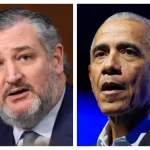
–>
September 29, 2022
Inflation has been summed up as “too much money chasing too few goods.”
‘); googletag.cmd.push(function () { googletag.display(‘div-gpt-ad-1609268089992-0’); }); }
Some contend that the recent uptick in price inflation is the result of an expansion of the money supply, and they date the start of that expansion back to the Spring of 2020.
That’s when the Federal Reserve began pumping trillions of newly-minted Fed dollars into the economy. The Fed’s money printing continued into 2022. Our current inflation, it would then seem, might just be due to “too much money.”
If you recall, the reason for the Fed’s massive money-printing was the government’s response to the coronavirus pandemic. The trillions in new money were for the government shutdowns of the economy.
‘); googletag.cmd.push(function () { googletag.display(‘div-gpt-ad-1609270365559-0’); }); }
Keep in mind that it was the states that shut down the economy, not the federal government.
No government can deny people their ability to make a living without giving them the means to survive. Unlike the federal government, the states don’t have a central bank that can create money. But with the $2.2 trillion Cares Act, Congress rode to the rescue and accommodated the states with the money to pay for their shutdowns.
So, the states shut down their economies, Congress backstopped the states, and the Fed provided the money.
But what if the Fed had resisted, and said to Congress: Go ahead with your bailouts of the states if you must, but do it without our help. We’re not gonna buy any more bonds. The Fed’s job is to protect the value of the (once) almighty U.S. dollar.
Given that, if Congress were still intent on providing the money so the states could keep their economies shut down, then they would have had to borrow it. The funds would have had to come from selling new U.S. Treasury bonds for pre-existing money, rather than from the Fed’s creation of new money to purchase pre-existing U.S. Treasuries in the aftermarket.
Had the Fed resisted and refused to yet again create money for Congress, the money supply wouldn’t have expanded. But if Congress had continued with their pandemic spending programs by borrowing, then the federal deficit would have risen. Deficit spending is said to be inflationary, but it wouldn’t have been as bad as having the Fed print the money.
‘); googletag.cmd.push(function () { googletag.display(‘div-gpt-ad-1609268078422-0’); }); } if (publir_show_ads) { document.write(“
We know that it was the Federal Reserve that caused the oversupply of “too much money.” But don’t forget about the other part of the equation: “too few goods.” What caused the undersupply of goods?
Well, it wasn’t the Fed.
One early action to tamp down the supply of critical goods happened on Jan. 20, 2021, Inauguration Day, when Joe Biden reversed the energy policies of his predecessor.
Those foolish policy reversals demonstrated a hostility to fossil fuels and the price at the pump for gasoline soon hit an all-time high. The price for diesel was even higher, and since most products are transported with diesel, the premium for diesel spread throughout the economy, and was tacked onto the price of everything.
Besides Biden’s dreadful domestic energy policy, his foreign policy on the war in Ukraine also affected oil prices. Europe should have parted ways with Biden and, in exchange for peace and the continued flow of reasonably priced oil and gas, amd promised Putin to not let Ukraine into NATO. Instead, Europeans are facing a brutal winter with skyrocketing energy prices and supply shortages. In some quarters, they are reduced to burning trash to stay warm. Unless Russia has a change of heart, some of our European cousins may freeze to death this winter.
Biden has touted the fact that the price of gasoline has gone down since reaching its record high earlier this year. But that’s been accomplished by tapping into the Strategic Petroleum Reserve. The SPR, which is below 450 million barrels now, is at its lowest level since 1984. Prices are sure to go back up when the plundering of the Reserve ends, which is sure to happen after the midterm election.
There are several other problems that also fall under the rubric of “too few goods,” for instance, our supply chain snags and our dependence on foreign manufacturers. In any event, it seems we were hit with a double whammy of “too much money” and “too few goods.”
In October 2021, the CDC estimated that COVID had given America 146.6 million infections, 7.5 million hospitalizations, and 921,000 deaths. For the infected, that’s a hospitalization rate of 5.1 percent, and a death rate of well under 1 percent.
The shutdowns were a colossal historic mistake; the Fed should never have provided the money for them. The states didn’t need to shut down their economies; they only needed to protect the vulnerable, the elderly, and those with compromised immune systems. Instead, Congress threw money at the problem. Even millionaires received “economic impact payments” totaling $2,400.
All that government spending was inflationary.
In both economic and medical outcomes, the states that didn’t shut down fared no worse than the states that did shut down, and some fared better. Without the shutdowns, there would have been little reason for the Fed to have printed so much money. (Had the states not embarked on shutdowns and the Fed not printed money, one wonders if the pandemic might have been deflationary.)
Consider the trade-offs: Government destroyed much of the economy for the sake of a tiny group of people who were nearing the end of their lives. And the shutdowns failed to stop the virus from sweeping throughout the populace.
It “just won’t do” to place all of the blame for inflation on the Big Bad Fed. Your elected government, Congress and the governors of the states, deserve most of the blame. That the draconian steps during the pandemic were entirely unnecessary is evidenced by the fact that so-called “essential workers” worked throughout the shutdowns. Groceries were delivered, fuel got to the pump, no one starved nor froze to death.
The COVID pandemic was the Black Swan event that Democrats were hoping for. If it weren’t COVID, the Dems would have tried to find some other crisis to help them defeat Orange Man. COVID gave the government the excuse to exercise authoritarian measures to control the people, and it was all blatantly unconstitutional.
The state governors and other parties that are guilty of such oversteps should be held accountable. But don’t wait for the DOJ to haul these petit fascists in the dock; to get a little justice, citizens will likely need to launch their own lawsuits — and vote.
Jon N. Hall of ULTRACON OPINION is a programmer from Kansas City.
Image: Pictures of Money, via Flickr // CC BY 2.0
<!– if(page_width_onload <= 479) { document.write("
“); googletag.cmd.push(function() { googletag.display(‘div-gpt-ad-1345489840937-4’); }); } –> If you experience technical problems, please write to helpdesk@americanthinker.com
FOLLOW US ON
<!–
–>
<!– _qoptions={ qacct:”p-9bKF-NgTuSFM6″ }; ![]() –> <!—-> <!– var addthis_share = { email_template: “new_template” } –>
–> <!—-> <!– var addthis_share = { email_template: “new_template” } –>





